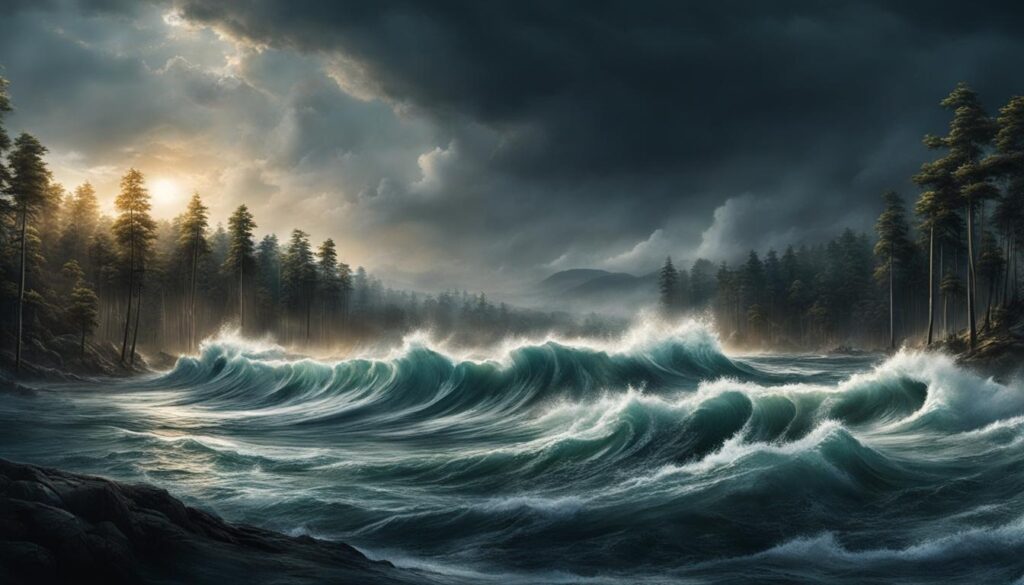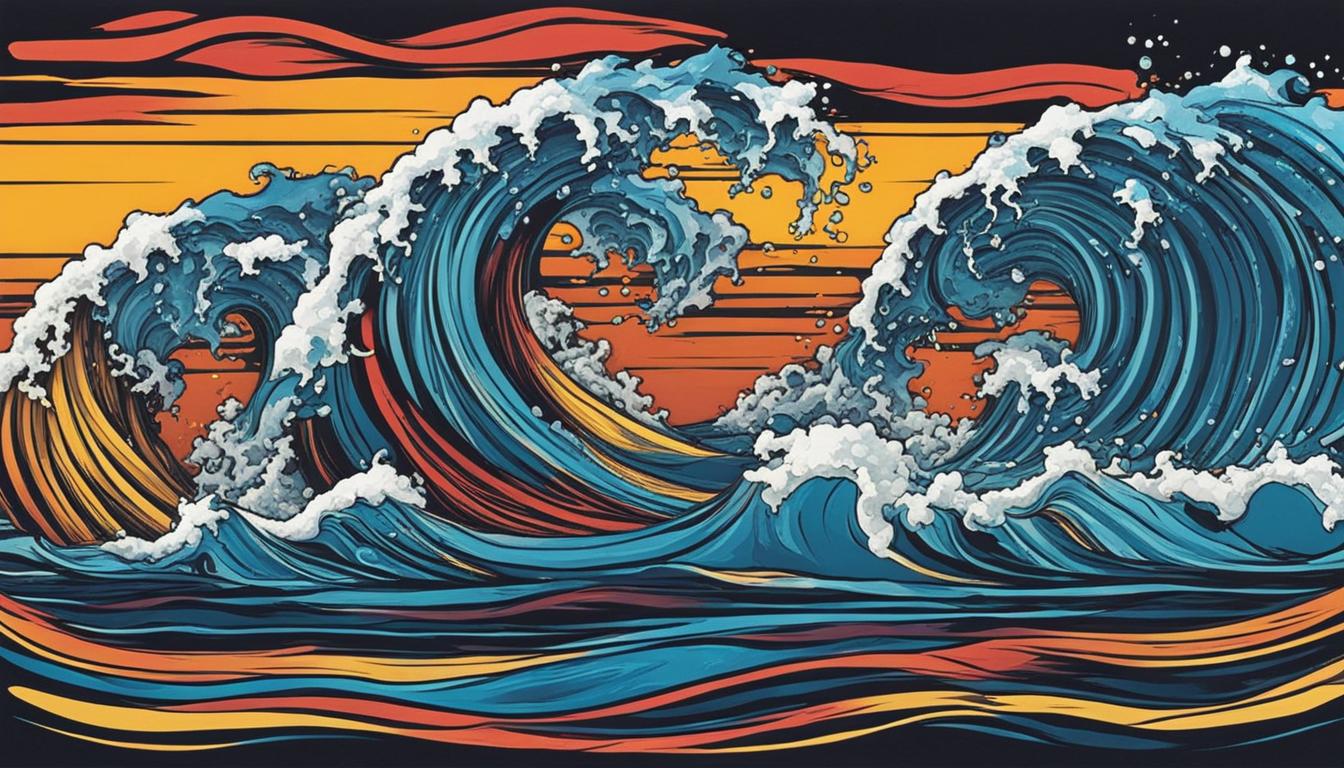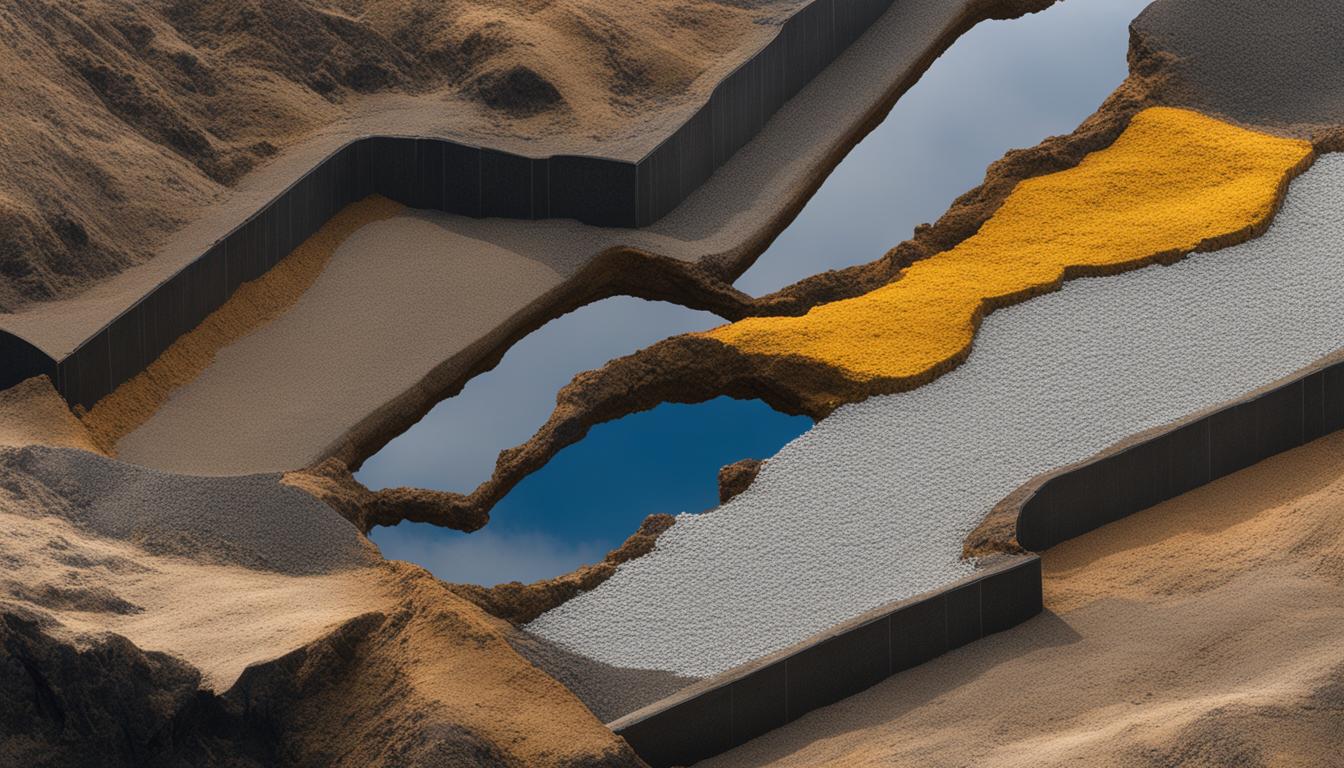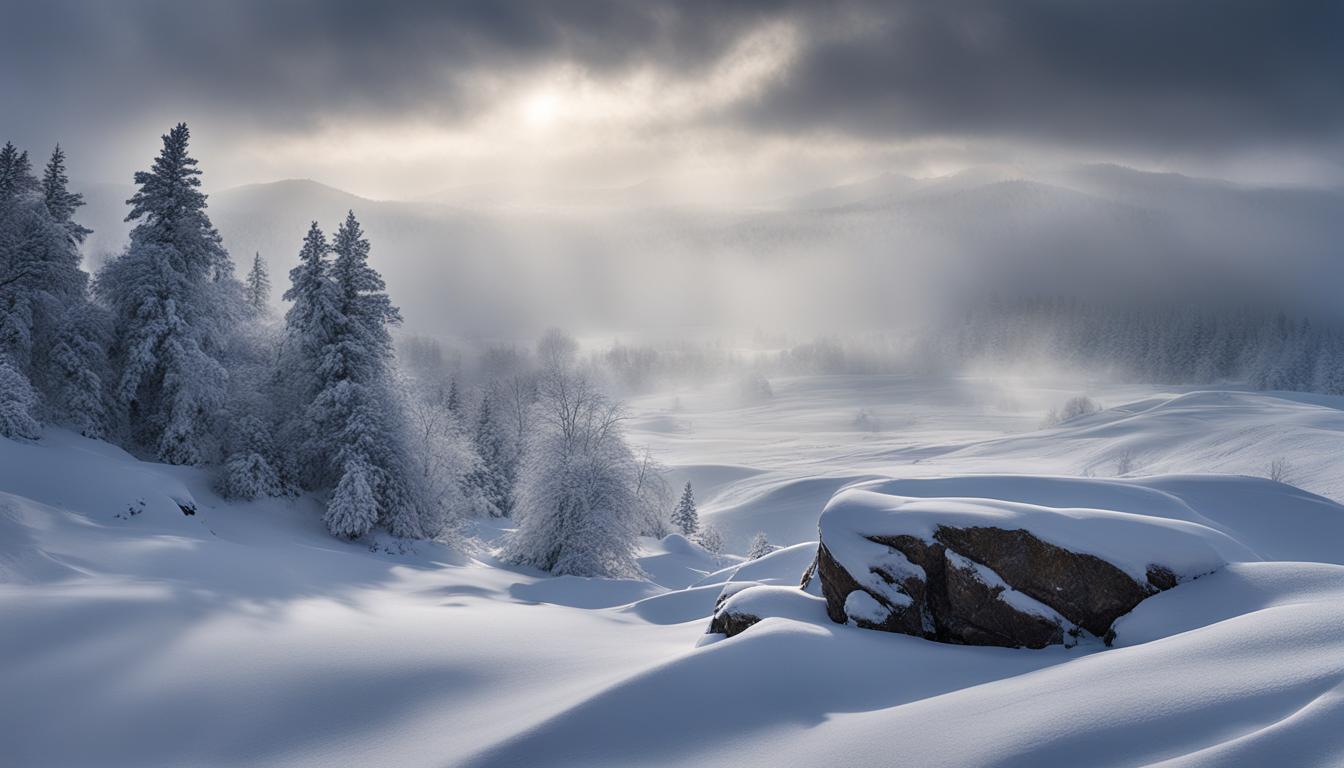When it comes to natural phenomena in bodies of water, seiches and tsunamis are often mentioned. While they may share some similarities, it is important to understand the distinct differences between them, especially in the context of lakes.
Key Takeaways:
- Seiches and tsunamis are natural events that occur in lakes.
- Seiches are standing waves triggered by wind and changes in atmospheric pressure, while tsunamis are generated by seismic activity.
- Seiches are more common in enclosed or semi-enclosed bodies of water, while tsunamis are typically associated with ocean coastlines.
- Seiches can cause localized flooding and disruptions, while tsunamis have the potential for widespread destruction along coastlines.
- Understanding the differences between seiches and tsunamis is crucial for ensuring the safety and well-being of lakeside communities.
Characteristics of Seiches in Lakes
Seiches in lakes are a fascinating natural phenomenon characterized by standing waves that occur in enclosed or semi-enclosed bodies of water. These waves have distinct characteristics that differentiate them from other water movements.
One key characteristic of seiches is the presence of larger vertical oscillations at each end of the lake, while the center point experiences smaller oscillations. This creates a unique pattern where the water moves back and forth, similar to a pendulum, for extended periods of time. These oscillations can last for hours or even days, depending on the duration and strength of the triggering force.
Seiches are primarily triggered by external factors such as strong winds and rapid changes in atmospheric pressure. When these forces act on the surface of the lake, they push the water from one end to the other, causing the water to then rebound back and forth, resulting in the characteristic oscillations. While seiches are more common in semi-enclosed or fully enclosed basins, they can also be triggered by earthquakes, tsunamis, or severe storm fronts.
To better understand the characteristics of seiches in lakes, refer to the table below:
| Characteristic | Description |
|---|---|
| Vertical oscillations | Larger at each end, smaller at the center |
| Triggering factors | Strong winds, rapid changes in atmospheric pressure, earthquakes, tsunamis, severe storm fronts |
| Duration | Hours to days |
Understanding the characteristics of seiches in lakes is crucial for coastal communities and those living near bodies of water. By being aware of the factors that can trigger seiches, communities can be better prepared and take appropriate precautions to mitigate potential risks and damages caused by these unique water movements.
Storm Surges and Seiches: A Comparison
While seiches share some similarities with storm surges, it’s important to note the key differences between the two. Storm surges are caused by weather events such as hurricanes or intense storms, while seiches are primarily influenced by wind and changes in atmospheric pressure. Additionally, storm surges can lead to a rapid rise in water levels along coastlines, whereas seiches result in oscillating waves that move back and forth within a body of water.
By understanding these distinctions, coastal communities can better assess and respond to potential water-related risks, ensuring the safety and well-being of residents and coastal infrastructure.
Characteristics of Tsunamis in Lakes
Tsunamis in lakes are a unique and fascinating natural phenomenon. While they are less common compared to ocean coastlines, they can still pose significant dangers to lakeside communities. Tsunamis in lakes are primarily caused by seismic activity, such as earthquakes or underwater landslides. When these events occur, they can generate a tremendous amount of energy that displaces water and creates powerful waves.
One of the key characteristics of tsunamis in lakes is their ability to travel at high speeds. These waves can reach speeds of up to 800 kilometers per hour, making them incredibly fast-moving and destructive. As tsunamis approach shallow water, they slow down and swell, forming high waves that can crash onto shorelines with devastating force.
Unlike seiches, which are standing waves, tsunamis are transient and have a distinct wave train. This means that after the initial wave passes, there are often subsequent waves that follow, causing additional damage. The height and intensity of these waves can vary depending on the magnitude of the seismic event that triggered the tsunami.
It’s important to note that tsunamis in lakes can affect a larger area of the coastline compared to seiches. They have the potential to cause widespread destruction, including flooding, damage to buildings and infrastructure, and loss of life. Communities living near lakes must be aware of the risks associated with tsunamis and have proper evacuation plans in place to ensure the safety of residents.

Table: Comparison between Seiches and Tsunamis in Lakes
| Seiches | Tsunamis | |
|---|---|---|
| Trigger Mechanism | Primarily caused by external factors like wind and atmospheric pressure changes | Caused by seismic activity, such as earthquakes or underwater landslides |
| Wave Characteristics | Standing waves with larger oscillations at the ends of the lake | Transient waves with a distinct wave train |
| Speed | Relatively slower compared to tsunamis | Can travel at speeds up to 800 kilometers per hour |
| Impact | Localized flooding and disruptions | Potential for widespread destruction along coastlines |
Differences in Trigger Mechanisms
Understanding the differences between seiches and tsunamis begins with examining their trigger mechanisms. Seiches, as previously mentioned, are primarily caused by external factors such as wind and changes in atmospheric pressure. These forces push water from one end of the lake to the other, creating oscillations that result in standing waves. In contrast, tsunamis are triggered by seismic activity, most commonly underwater earthquakes or landslides. The energy released during these events displaces water and generates the powerful waves associated with tsunamis.
Seiches and tsunamis also differ in their origins. Seiches can occur in both enclosed and semi-enclosed bodies of water, including lakes, whereas tsunamis are typically associated with ocean coastlines. While seiches can result from local factors like severe storm fronts, tsunamis are more commonly generated by large-scale seismic events.
The fundamental distinction between seiches and tsunamis lies in the nature of their trigger mechanisms. Seiches are driven by external forces, while tsunamis are the result of seismic activity. Understanding these differences is crucial for predicting and mitigating the potential risks associated with these natural phenomena.
Impact and Dangers
Seiches and tsunamis in freshwater systems can have significant impacts and pose dangers to lakeside communities. Understanding these risks is crucial for preparedness and the safety of individuals residing in these areas.
Impact of Seiches
Seiches can result in flooding along the shores of lakes, leading to property damage, erosion, and the displacement of sediment. The oscillating water levels caused by seiches can also disrupt boating and navigation activities, posing risks to recreational boaters and commercial vessels. Additionally, the forceful movements of water during seiches can impact the stability of infrastructure, such as piers, docks, and shoreline structures. It is essential for lakeside communities to be aware of the potential for seiches and take appropriate precautions to minimize the impact on their properties and the safety of residents.
Impact of Tsunamis
Tsunamis in lakes have the potential to cause widespread destruction along the lakeside areas. As these powerful waves reach shallow water, they slow down, swell, and can generate high waves that crash onto the shorelines with immense force. The impact of tsunamis can result in severe flooding, damage to buildings and infrastructure, and the loss of life. The destructive power of tsunamis can extend far beyond the immediate lakeside areas, affecting larger regions and communities. Therefore, it is crucial for lakeside communities to have robust early warning systems and evacuation plans in place to mitigate the impact and ensure the safety of residents.
Dangers Posed by Seiches and Tsunamis
Both seiches and tsunamis pose significant dangers to lakeside communities. Seiches can occur with little warning and can lead to sudden changes in water levels, posing risks to individuals near the water’s edge. The powerful currents associated with seiches can make swimming or boating extremely hazardous during these events. Similarly, tsunamis can generate extremely strong waves that can pose a threat to anyone near the lakeside, and the force of these waves can easily overcome even the strongest swimmers. It is vital for individuals living in lakeside areas to be aware of the potential dangers of seiches and tsunamis and to follow emergency instructions and evacuation protocols to ensure their safety and well-being.
| Seiche | Tsunami | |
|---|---|---|
| Trigger Mechanism | External factors like wind and atmospheric pressure changes | Seismic activity such as earthquakes or underwater landslides |
| Reach | Localized to semi-enclosed or fully enclosed basins | Can travel long distances along the coastline |
| Impact | Localized flooding, erosion, disruption of boating activities | Widespread destruction, flooding, damage to buildings and infrastructure |
| Dangers | Sudden changes in water levels, hazardous currents | Strong waves, potential for drowning or injury |
Conclusion
In conclusion, seiches and tsunamis are distinct natural events that occur in lakes and other bodies of water. Seiches, characterized by standing waves, are triggered by external factors such as wind and atmospheric pressure changes. On the other hand, tsunamis, powerful ocean waves, are generated by seismic activity.
While seiches can cause localized flooding and disruptions along the shores of lakes, tsunamis have the potential to cause widespread destruction along coastlines, including lakeside areas. Understanding the differences between these two phenomena is crucial for ensuring the safety and well-being of lakeside communities.
By recognizing the trigger mechanisms and characteristics of seiches and tsunamis, we can better prepare and respond to these natural events. Monitoring weather patterns and seismic activity can help anticipate the occurrence of seiches and tsunamis, allowing for timely evacuation and implementation of safety measures.
Overall, the knowledge and awareness of seiches and tsunamis can contribute to the resilience of lakeside communities, mitigating the potential impact and dangers associated with these natural phenomena.
FAQ
What is a seiche?
A seiche is a standing wave that occurs in enclosed or semi-enclosed bodies of water, such as lakes. It is caused by factors like wind and changes in atmospheric pressure.
What is a tsunami?
A tsunami is a powerful ocean wave that is typically caused by seismic activity, such as earthquakes or underwater landslides. It can travel long distances and cause widespread destruction along coastlines.
What causes seiches?
Seiches are primarily caused by external factors like wind and changes in atmospheric pressure. These forces can push water from one end of the lake to the other, creating oscillations.
What causes tsunamis?
Tsunamis are typically caused by seismic activity like earthquakes or underwater landslides. These events can transfer a tremendous amount of energy, displacing water and generating powerful waves.
What are the characteristics of seiches in lakes?
Seiches in lakes are characterized by standing waves with larger vertical oscillations at each end of the body of water, and smaller oscillations at the center point. They can last for hours or even days.
What are the characteristics of tsunamis in lakes?
Tsunamis in lakes are similar to those in the ocean, but they are less common. As the waves travel into shallow water, they slow down and swell, forming high waves that can crash onto shorelines.
How do seiches and tsunamis differ in trigger mechanisms?
Seiches are mainly triggered by external factors like wind and changes in atmospheric pressure, while tsunamis are triggered by seismic activity such as earthquakes or underwater landslides.
What are the impacts and dangers of seiches and tsunamis?
Seiches can cause flooding, erosion, and damage to infrastructure along the shores of lakes. Tsunamis have the potential to cause widespread destruction, including flooding and damage to buildings and infrastructure.



